This talk was derived from an opensource.com article I wrote in April 2017, Golang to the rescue: Saving DevOps from TLS turmoil. Presented at GopherCon 2017 as a Lightning Talk. Source for the talk is available on GitHub.
Introduction
Notes:
- Hi! I’m Chris!
- I manage do X at Y (we’re hiring)
- I work in the DevOps space
- I contribute content a few places
- I run a DevOps Newsletter called DevOps’ish if you’re into those please check it out
- This talk was derived from an opensource.com article I wrote in April 2017
But Most Importantly

I’m many things But Most Importantly, I’m a Gopher
Not Too Long Ago in a Place of Work Far, Far Away…
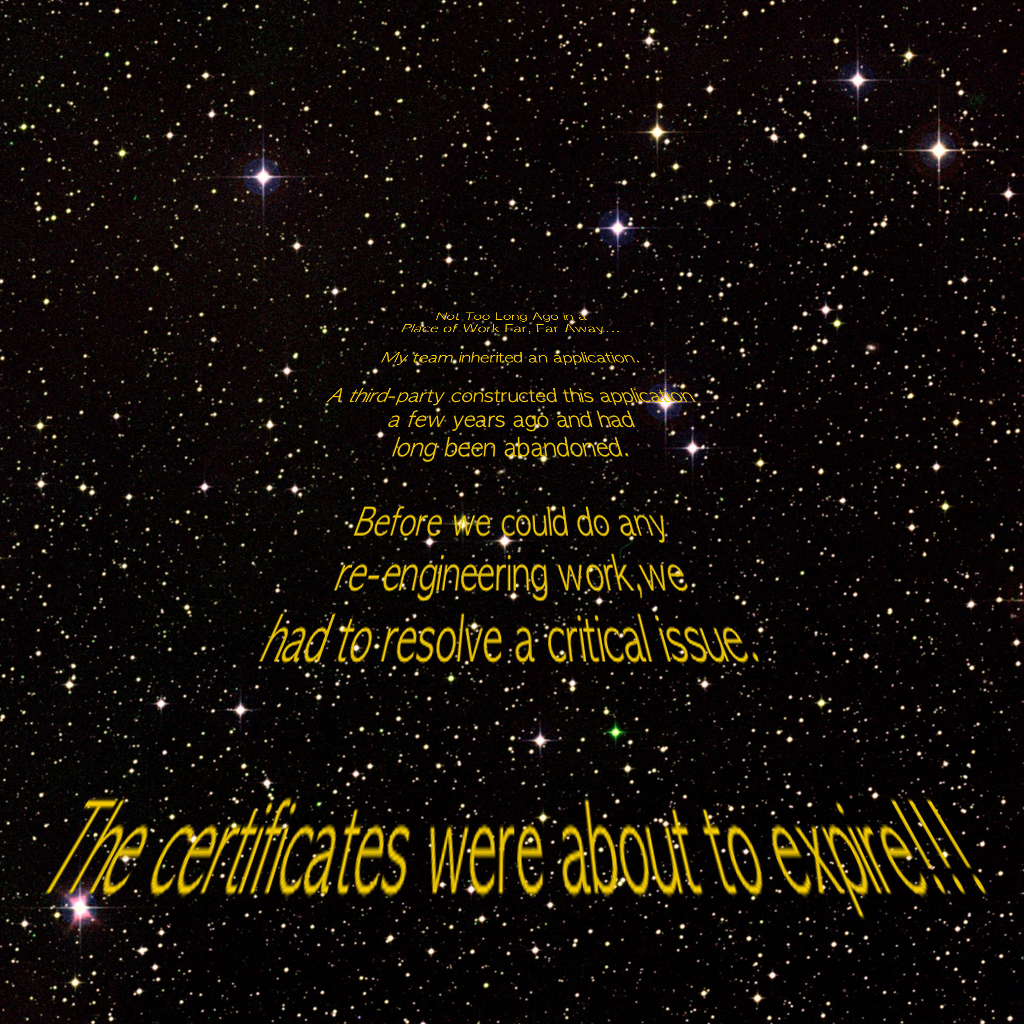
- My team of merry DevOps’ers inherited an application
- A third-party built the app a few years ago
- The app had long been abandoned
- Before we could do any re-engineering work, we had to resolve a critical issue.
- The certificates were about to expire!
…

- Oh!
- And the only environment this application was in was production
- And there was no time to implement a new key management system
- And it was a pet project of someone in senior leadership
Let’s Talk Certificate Chains
 2 Chainz (we can talk rap music later)
2 Chainz (we can talk rap music later)
- Let’s Talk Certificate Chains for a minute
- HTTPS, SSL… it’s all TLS, right?
- In my opinion, if you’re using TLS you MUST have a rock solid configuration
- This means you have to include the certificate chain in the correct order
- This is no longer optional in the post-Heartbleed world
- The Internets are watching
This is the Goal
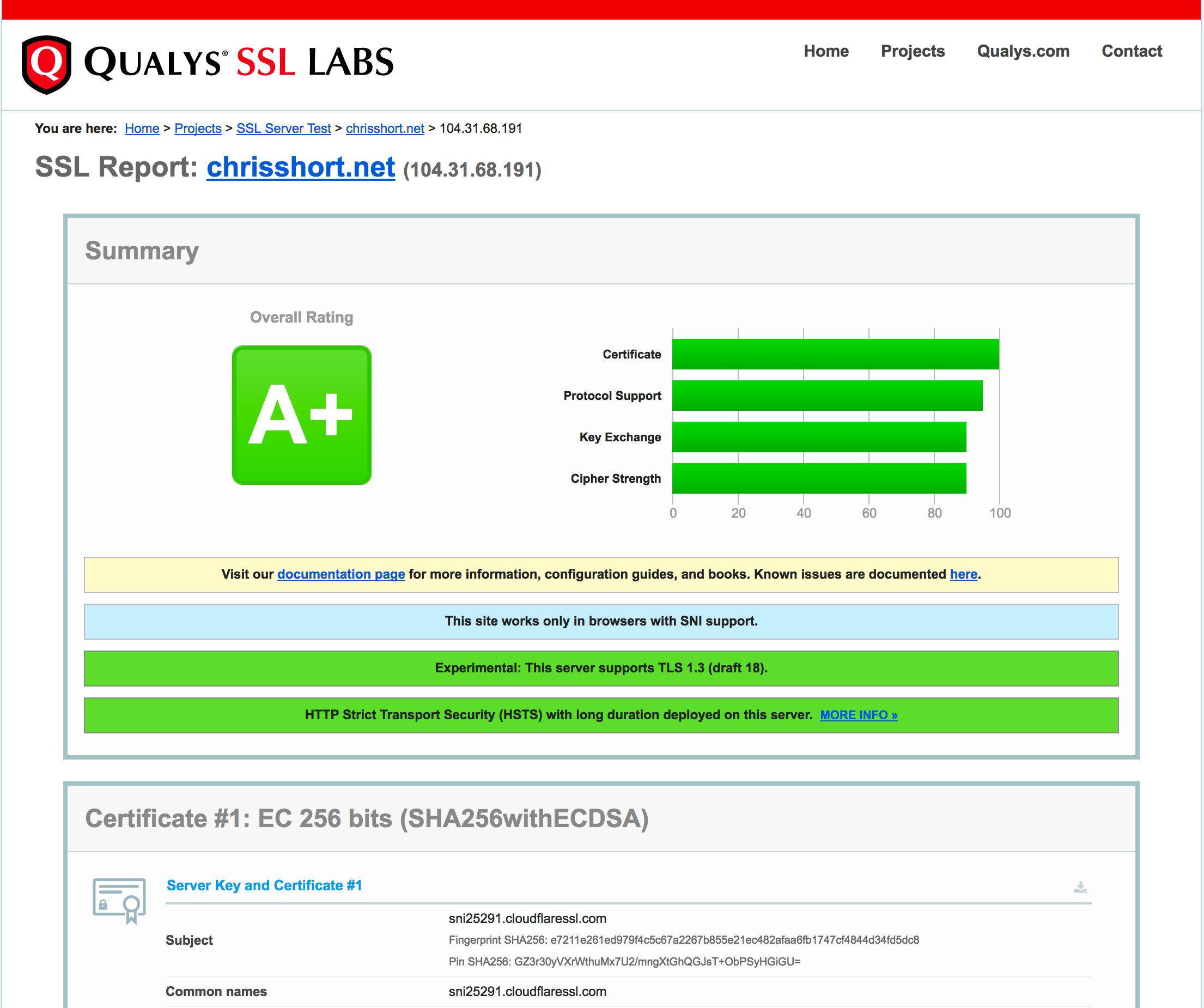
- This is the goal
- If you are going to bother to encrypt your traffic you better do it right
- This is what we’re aiming for; an A+
- At this company, we obtained certs from a preferred vendor that our company was cool with
- I prefer Let’s Encrypt but some companies aren’t comfortable with that yet for various reasons
- The process goes like this…
- You generate your CSR and private key
- You send the CSR to the vendor
- The certificate arrives but usually doesn’t have an intermediate key in chain because… vendors be vendoring
NBD … OMG

- No big deal
- Let’s go to the vendor’s documentation…
- And OMG…
- The vendor docs are terrible
- This is when you learn…
- Cryptography is hard but implementing cryptographic best practices might be even harder
…

- What do we do?
- Look at statistical probabilities and start shuffling keys around?
- The series of games you have to play with openssl or nginx or some other method aren’t intuitive
- Do you know how hard this is to explain to people?
So What Does Any Good Engineer Do?
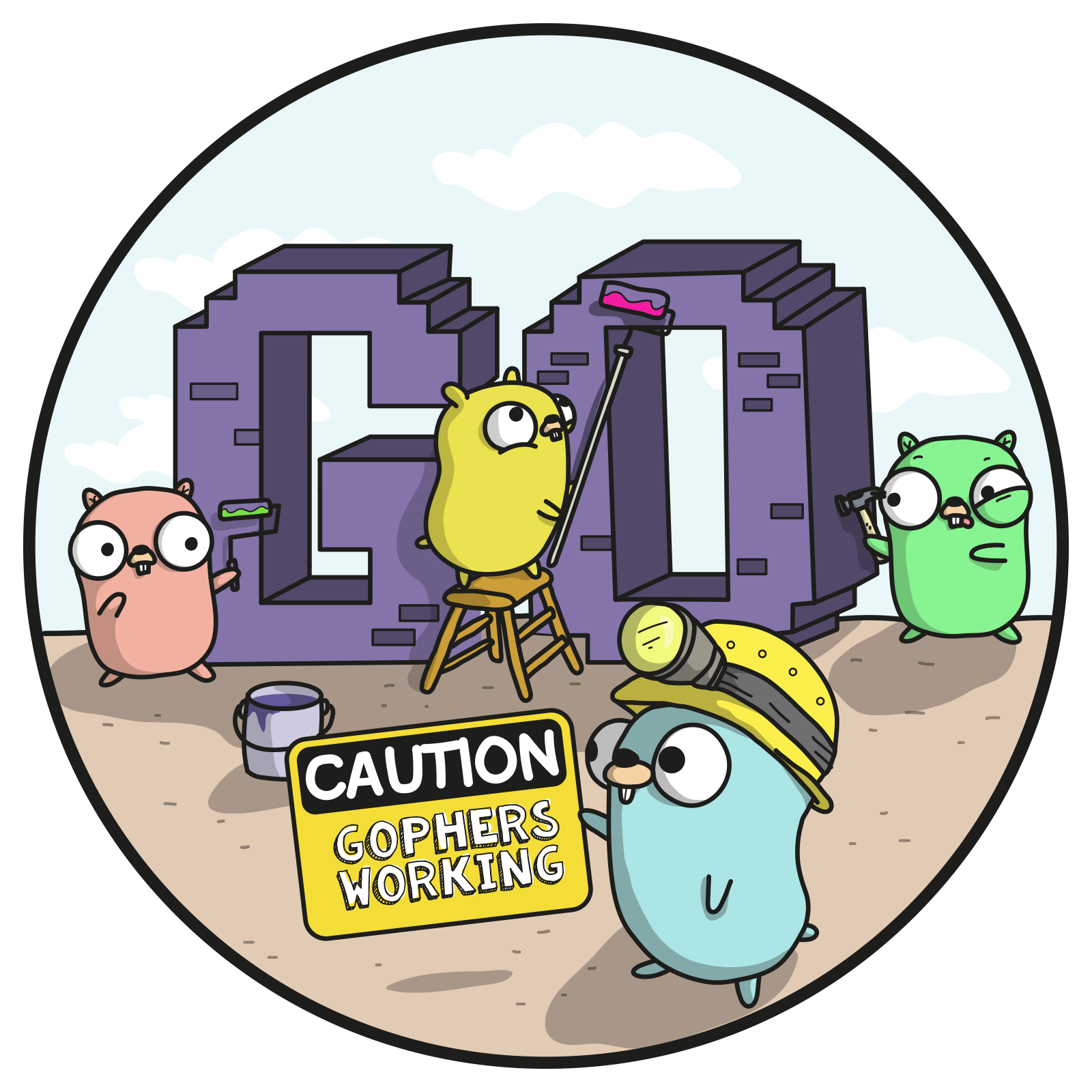
- We needed a tool that would fail if the certificate chain provided was incorrect
- We wanted a lightweight tool that could be publicly accessible
- Conducting a third-party analysis of the certificates and configuration was also a requirement
- There were no tools that I could find meeting these needs
- So I decided to build my own
- With Go of course!
Three Go Packages: log
The go
logpackage is pretty self-explanatoryPackage that enables logging
Needed a spectacular failure at the sign of trouble
loghas three helper functions:print,fatal, andpanicOutput from the package goes to
stderrUsed a
fatalerror to get the web server to stop and log any issue
Let me just say the Go standard library is amazing!
logis designed beautifullyUsing
fatalto break the app and log tostderrif something isn’t right is great!
Three Go Packages: crypto/tls
- The Go
crypto/tlspackage partially implements TLS 1.2, as specified in RFC 5246 - Package configures usable SSL/TLS versions
- Identifies preferred cipher suites and elliptic curves used during handshakes
- This is the package that handles connections securely

- The crypto/tls package is a splendid implementation of the RFC
- “It just works.”
Three Go Packages: net/http
- Go implementation of HTTP
net/httphas a function calledListenAndServeTLS- ListenAndServeTLS provides the desired certificate checking functionality
- “If the certificate is signed by a certificate authority, the certFile should be the concatenation of the server’s certificate, any intermediates, and the CA’s certificate.”

net/httphas theListenAndServeTLSfunction and it’s awesome- It fails if your certs aren’t up to snuff or ordered properly
- It helps us Gophers out immensely by enforcing best practices
main: mux, cfg, srv
- Code creates a
mux, short for HTTP request multiplexer - I ❤️ multiplexers (it’s a long story that involves analog signals)
muxhas a function that creates an HTTP server with headers and content (Hello World!)cfgbrings in all the TLS bits seen in a solid web server configsrvputs the pieces together and defines what port to listen on
Fail Spectacularly
- I ❤️ DevOps
- I embrace failure
log.Fatal(srv.ListenAndServeTLS("/etc/ssl-tester/tls.crt","/etc/ssl-tester/tls.key"))- Defines path of certificate files to use
- Also logs a fatal error if certificate is not valid
- Fails Fast

- I love DevOps and I embrace failure
- The code allows us to fail quickly if the certificates aren’t in accordance with RFC
- Stuff in the standard library JUST WORKS
It’s Open Source!
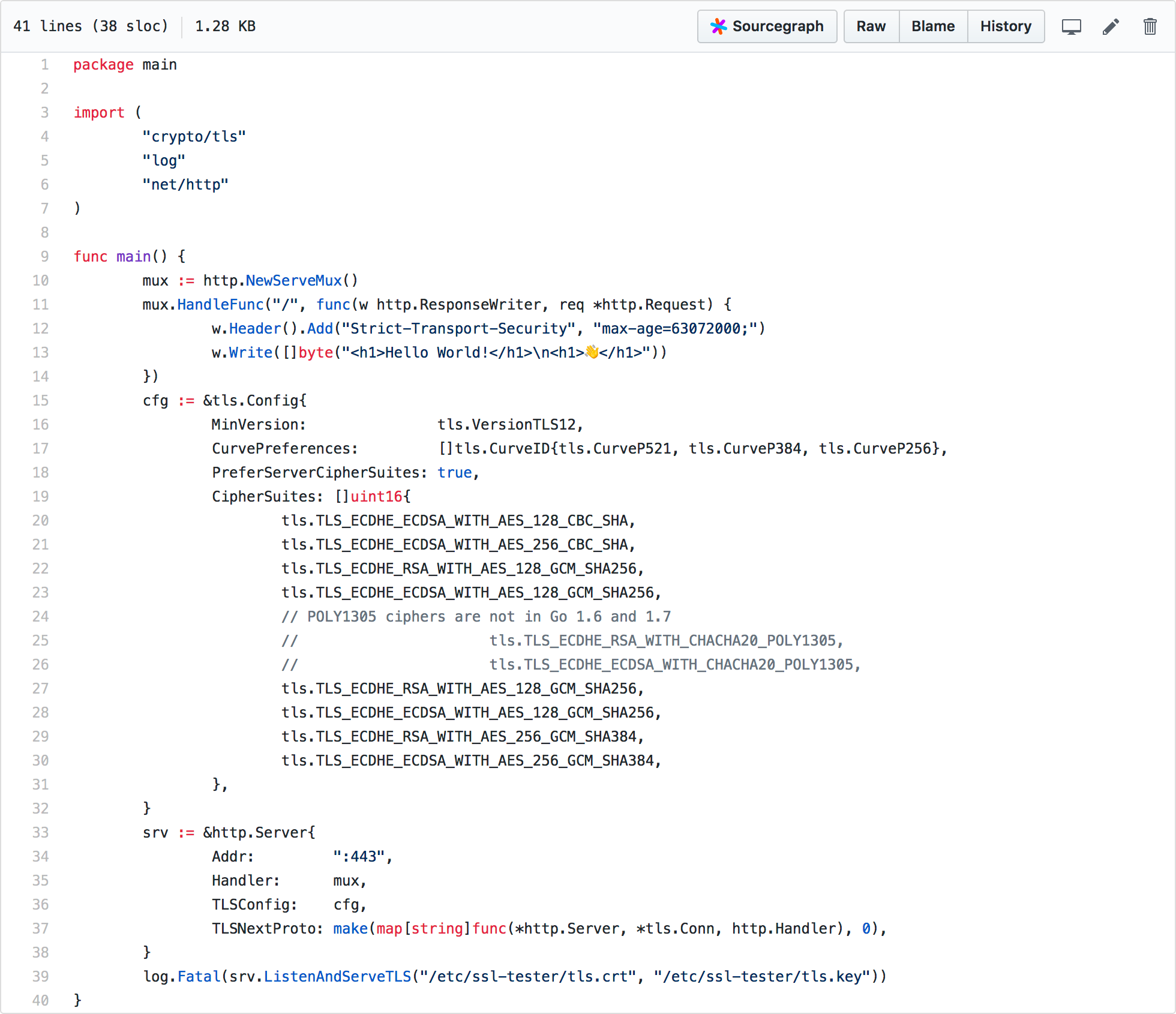 https://github.com/chris-short/ssl-tester
https://github.com/chris-short/ssl-tester
- The code is open-sourced
- Check it out on github.com/chris-short/ssl-tester
- Throw a star my way if you feel like it
It Works!

- Yes it Works
- Yes you can access it right now!
- https://ssl-tester.chrisshort.net redirects you to a reference implementation (this project is abandoned)
No. It Really Works!
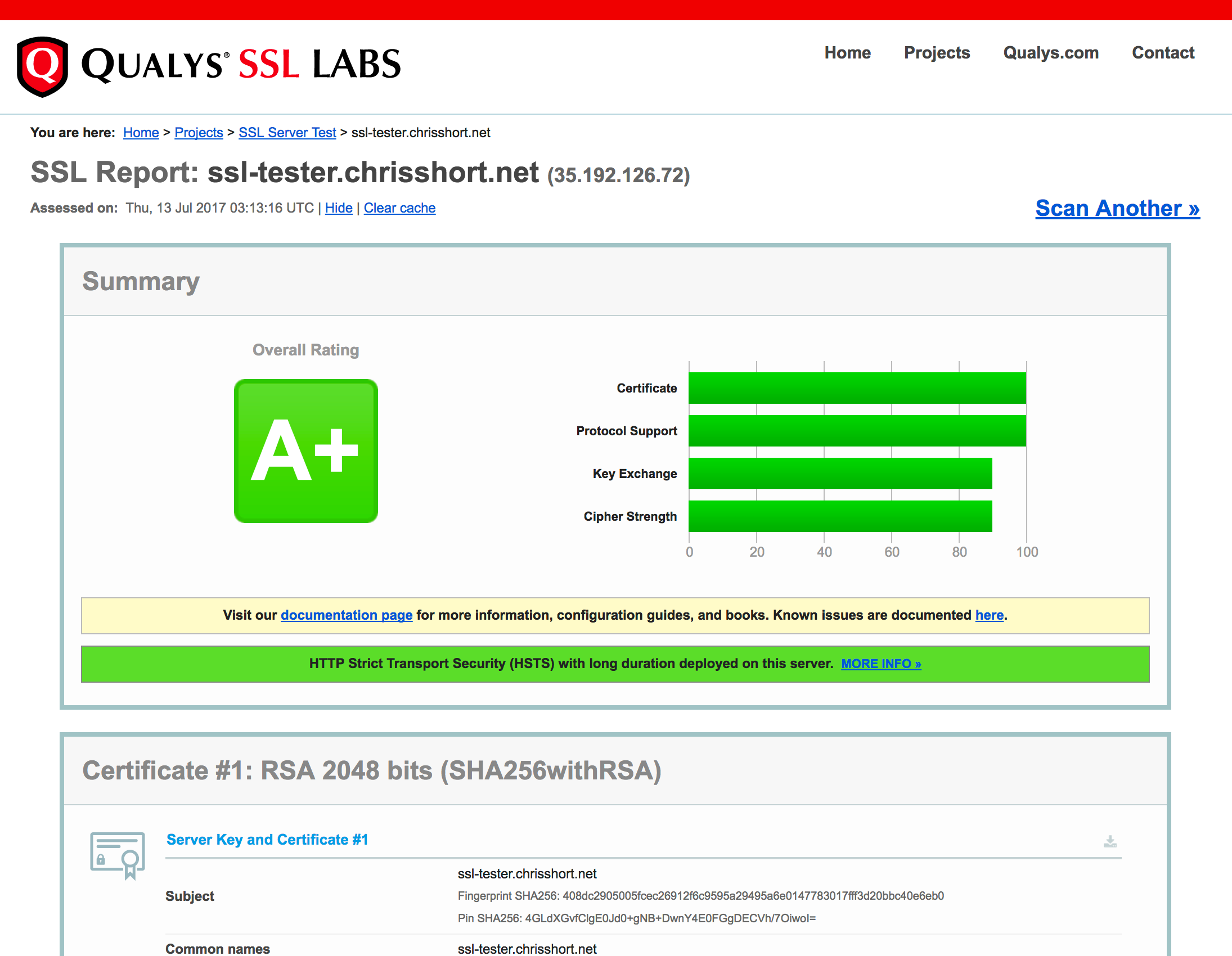
- You can even scan it with external tools!
Conclusion
- The Go code does exactly what I need it to do and nothing more
- About 40 lines of code!!! I ❤️ Go!
- Binary is a self-contained web server
- Less than 6MB!!! I ❤️ Go!
- Can be safely deployed to any public server
- External testing run against it for extra vetting

- The tool does exactly what I need it to do and nothing more
- It fails when the certificate chain provided is incorrect
- It’s lightweight and publicly accessible
- I’m able to test via third-parties
- It’s a tiny, single binary